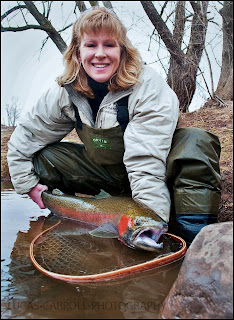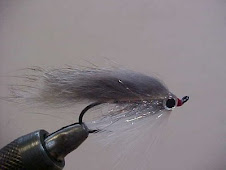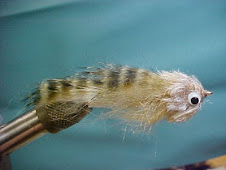 When the Hendrickson’s begin hatching in April - May, the major rivers of the Northeast come alive. The hatch attracts swallows, cedar waxwings and nighthawks that dart and dive and catch the bugs in mid-air.
When the Hendrickson’s begin hatching in April - May, the major rivers of the Northeast come alive. The hatch attracts swallows, cedar waxwings and nighthawks that dart and dive and catch the bugs in mid-air.  Underwater, the hatch draws trout out from hiding to feed with abandon in the open water. The careless trout bring an osprey or two that hover high above the river waiting for an easy mark. Then with deadly speed and precision they plunge into the water with open talons. But the Hendrickson’s also bring the fly fishers to what is the first big event of the fly fishing season.
Underwater, the hatch draws trout out from hiding to feed with abandon in the open water. The careless trout bring an osprey or two that hover high above the river waiting for an easy mark. Then with deadly speed and precision they plunge into the water with open talons. But the Hendrickson’s also bring the fly fishers to what is the first big event of the fly fishing season. Hendrickson’s are the kind of bug that put the fly in fly-fishing.
About one-half an inch long, they live most of the year underwater clinging to the underside of rocks, in their nymph stage. In May, they undergo a metamorphosis -- swimming to the surface to emerge from their shells as flying insects. Clouds of them form over the river to mate and lay their eggs in the water. Within three weeks the whole dance is over.
Entomologists call these bugs Ephemerella Subvaria. But back in 1916, it was customary for fly tiers to name their flies for their clients. A tier from the Beaver kill River, named Steen rod, tied an imitation of the bug for a client named Hendrickson. The fly worked and the name stuck.
Part of the mystique of the Hendrickson fly is its intricate coloring.
Fly tiers use tufts of lemon colored wood duck feathers to fashion wings and blue dun rooster feathers for the legs. The body of the bug has an elusive pinkish-grayish mahogany cream hue. Some specialists say the color varies from river to river. In his original fly, Steen rod claimed to use the "urine-stained hair of a vixen" (female fox) to achieve this critical body color. Maybe old Steen rod was having one over on Mr. Hendrickson? Or maybe he was cleverly marketing his fly's mystical aura? Recipes for the Hendrickson fly still call for this material, though it is not readily available. However, fly shops do stock a pinkish-grey synthetic substitute.
In the week prior to the hatch, the Hendrickson nymphs become very active. Turn over a submerged river rock and you can see them wriggling with anticipation, while other bugs appear sleepy. Meanwhile, in garages and storage closets across the region, fly fishers also begin to stir. They patch leaks in their waders with duct tape. They buy fascinating gadgets that "really catch fish" on the Internet. But these outward movements mask the awakening of their subconscious fishing faculties. Fly fishers begin to dream of vivid red-spotted brown trout that take artificial Hendrickson flies with crisp decisive movements.
Like the prehistoric cave painters of Lascaux, the fly fisher's visions play a crucial role in the hunt. Standing by the river, ordinary people see only rushing water, while really good fly fishers "see" fish.
Half the time they are still dreaming, but they are often right.
Fishing the Hendrickson hatch is a civilized affair. Because the bugs don't get moving until late morning, there is plenty of time to sleep in and even have a leisurely brunch before heading to the river.
Generally, the best fishing is just before noon and again in the early evening. In the morning, the trout dart about catching the nymphs that are swimming to the surface. Sometimes, they break the surface snapping up the adult winged fly. In the evening, the trout feed lazily at the surface on the spent egg-laying flies, or spinners. But unusual weather can shift these times considerably, so it is best not to assume anything.
The morning hatch stage and the evening spinner stage require different flies. Steen rod’s famous fly imitates the newly hatched female as it floats down the river contemplating its first flight. Another fly called the Red Quill, invented by Art Flick, imitates the male spinner.
The Red Quill is smaller and has a deep mahogany body with clear wings.
A good local fly shop will have the flies that match the local conditions. But fooling the trout takes more than just a pretty fly. The fly must behave like the real bug. This is called "presenting" the fly.
A Hendrickson nymph should rise from the bottom as if it were swimming to the surface. Presented in this way, a foot or two in front of a trout's nose, a nymph is a sure way to hook a fish.
If presenting a nymph sounds hard, presenting a spinner is harder.
The spinner is a dead fly floating on top of the water. Now, you might think that getting an artificial fly to play dead is easy. But in truth it takes a lot of work to make your fly do absolutely nothing. The many threads of current pulling on the fly line conspire to pull the spinner fly off of its dead drift. If your imitation moves at all, with respect to the current, the trout will ignore it. Dead flies are not supposed to move, after all.













